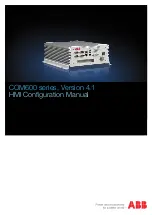
Chapter 14. Designing an N series solution
189
To add to the confusion, these suffixes often were applied in different ways across different
technologies. For example, network bandwidth is always decimal (100 Mbps = 100 x
10^6 bits). Memory is always binary, but is not usually shown as “GiB” (4 GB = 4 x
2^30 bytes).
Table 14-1 shows a comparison of the two measurements.
Table 14-1 Decimal versus binary measurement
Some systems use a third option in which they define 1 GB as 1000 x 1024 x 1024 kilobytes.
This conversion between binary and decimal units causes most of the capacity “lost” when
calculating the correct size of capacity in an N series design. These two methods represent
the same capacity, which is similar to measuring distance in kilometers or miles but then
using the incorrect suffix.
For more information, see this website:
http://en.wikipedia.org/wiki/Gigabyte
Raw capacity
Raw capacity is determined by taking the number of disks that are connected and multiplying
by their capacity. For example, 24 disks (the maximum in the IBM System Storage N series
disk shelves) x 2 TB per drive is a raw capacity of approximately 48,000 GB, or 48 TB.
Usable capacity
Usable capacity is determined by factoring out the portion of the raw capacity that goes to
support the infrastructure of the storage system. This capacity includes space that is used for
operating system information, disk drive formatting, file system formatting, RAID protection,
spare disk allocation, mirroring, and the Snapshot protection mechanism.
The following example is where the storage goes in the example 24 x 2 TB drive system.
Capacity often is used in the following areas:
Disk ownership: In an N series dual controller (active/active) cluster, the disks are
assigned to one or the other controller.
In the example 24 disk system, the disks are split evenly between the two controllers (12
disks each).
Spare disks: It is good practice to allocate spare disk drives to every system. These drives
are used if a disk drive fails so that the data on the failed drive can automatically be rebuilt
without any operator intervention or downtime.
Name (ISO)
Suffix (ISO)
Value (bytes)
Approximate
difference
Value (bytes)
Suffix (IEC)
Name (IEC)
Kilobyte
kB
10^3
2%
2^10
KiB
Kibibyte
Megabyte
MB
10^6
5%
2^20
MiB
Mebibyte
Gigabyte
GB
10^9
7%
2^30
GiB
Gibibyte
Terabyte
TB
10^12
9%
2^40
TiB
Tebibyte
Petabyte
PB
10^15
11%
2^50
PiB
Pebibyte
Remember: This document uses decimal values exclusively; therefore, 1 MB =
10^6 bytes.
Summary of Contents for N Series
Page 2: ......
Page 12: ...x IBM System Storage N series Hardware Guide ...
Page 18: ...xvi IBM System Storage N series Hardware Guide ...
Page 20: ...xviii IBM System Storage N series Hardware Guide ...
Page 22: ...2 IBM System Storage N series Hardware Guide ...
Page 32: ...12 IBM System Storage N series Hardware Guide ...
Page 52: ...32 IBM System Storage N series Hardware Guide ...
Page 64: ...44 IBM System Storage N series Hardware Guide ...
Page 90: ...70 IBM System Storage N series Hardware Guide ...
Page 122: ...102 IBM System Storage N series Hardware Guide ...
Page 194: ...174 IBM System Storage N series Hardware Guide ...
Page 200: ...180 IBM System Storage N series Hardware Guide ...
Page 224: ...204 IBM System Storage N series Hardware Guide ...
Page 244: ...224 IBM System Storage N series Hardware Guide ...
Page 292: ...272 IBM System Storage N series Hardware Guide ...
Page 298: ...278 IBM System Storage N series Hardware Guide ...
Page 300: ...280 IBM System Storage N series Hardware Guide ...
Page 314: ...294 IBM System Storage N series Hardware Guide ...
Page 326: ...306 IBM System Storage N series Hardware Guide ...
Page 327: ... Copyright IBM Corp 2012 2014 All rights reserved 307 Part 5 Appendixes Part 5 ...
Page 328: ...308 IBM System Storage N series Hardware Guide ...
Page 362: ...342 IBM System Storage N series Hardware Guide ...
Page 366: ...IBM System Storage N series Hardware Guide IBM System Storage N series Hardware Guide ...
Page 367: ......
















































